Ancient Temple
Ancient Temple was a self-driven project created using a brief set by my Level Design Mentor. The goal of this brief was to create a level using a modified version of Unreal Engines Advanced Locomotion System made by Jakub W.
Key focuses in the brief when creating this level where
- To identify gameplay metrics for different mechanics
- Have multiple routes providing different gameplay styles in the same area.
- Platforming
- Make 2 unique level mechanics and consider how they will evolve with the level.
- To centre the level around a structure.
Ideation
When ideating what I wanted to do with the level and my unique mechanics I had to consider what would work well with the mechanics already setup in the ALS project I was using. The ALS project mechanics are setup similarly to Uncharted or The Last of Us so I ended up deciding mechanics that directly interacted with the players movement and shooting would be sufficient.
For these mechanics I decided to go with an explosive trip mine and a destructible wooden plank. By themselves and combined they had a lot of good interact which I ended up experimenting with in the level.
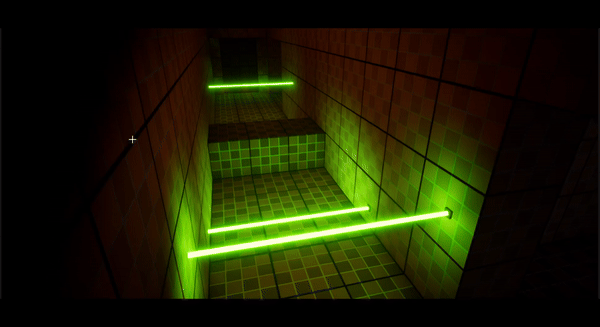

Later in the level I ended up deciding to allow the trip mines to move as this fit my brief with my mechanics evolving with the level as well as adding extra challenge and depth to the level in the later stages.
Throughout development, I also realised it would be a nice idea for the trip mines to be destroyed specifically if the player shoots it with an assault rifle. My thinking behind this was that players that want to run through the level aggressively are more likely going to want to avoid the slower paced areas that the trip mines push the player towards. This also followed my brief of allowing multiple routes through one area.
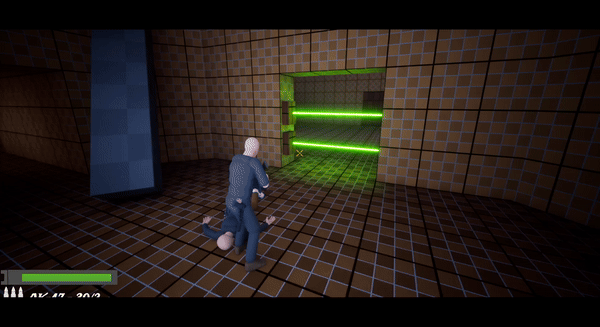

After designing the unique level mechanics I decided I needed to create the flow or beats of my level. These beats did end up going through several iterations aided by playtesting at later stages until I found ones that flowed the best.

Once the level flow had been decided, I wanted to create a basic 2D draft of my layout so I had something to start my blocking out process with. As all things level design this ended up going through a lot of iteration however the core concept was kept mostly the same throughout development.
Blocking out
The first thing I did when blocking out was get some reference images for what I wanted my level to look and feel like, as well as what sort of scale my central structure might be in the level. This helped inform my design during my time blocking out.


My block out went through tons of iteration, from balancing, enemy and item placement, platforming challenges, pacing and so fourth.
A lot of these changes were directed by self-driven playtesting and playtesting sessions run by me where I would spectate players over a call muted, taking notes and accepting feedback.
As you can see the area pictured above went through a lot of changes based on feedback and playtesting as said above. Initially the area was too flat and went against my brief so I used verticality to create a safer path for the player to take through the area while also leaving open a path that was shorter but more dangerous.

Still following my brief I attempted to make the level navigable in multiple different ways. Pictured above the player has multiple ways of exiting the space in a way that suits them. (Loud, Stealth, Hostile, Non-Hostile). I mostly kept to this but in some of the more small spaces It was better to have a more linear pathway through.

As the level was meant to revolve around a single structure. I decided to have the player return to the room with the statue in it several times, each time offering new gameplay opportunities to climb higher up the chamber. The last time they reach this room will be when they have reached the top of the statue and completed the level. I liked this idea as it helped re-base the player on where they are located on the level as well as show the progress they are making.
Scripted Events
As this level was loosely inspired by the Uncharted games, I wanted to have a go at making some scripted events that will be used to guide the player, and make them feel shocked or surprised when they happen. Throughout the level I had two main scripted events where the player encounters an enemy moving on a spline to force the player to react in specific ways.
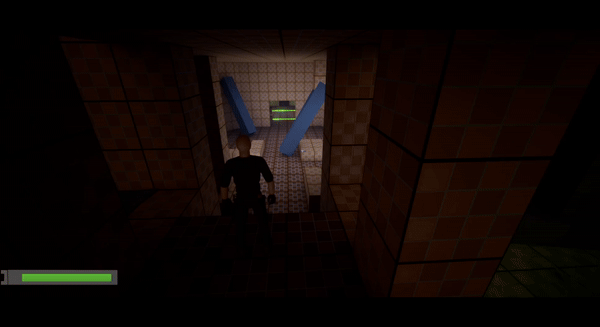
This scripted event where the enemy walks out from the doorway as the player enters was made specifically to give a quick shock to the player and force them to react quickly, while also showing the player that enemies could walk through the trip mines.
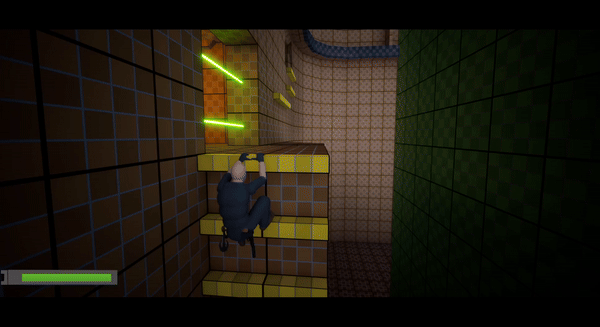
This event I implemented entirely for emotional impact. It gives the information to the player that an enemy is in that room, through that corridor. The enemy stays at the other end of the corridor once he has moved there, however as the player does not know this it will make them feel uneasy that he will return.
Level Sequencer
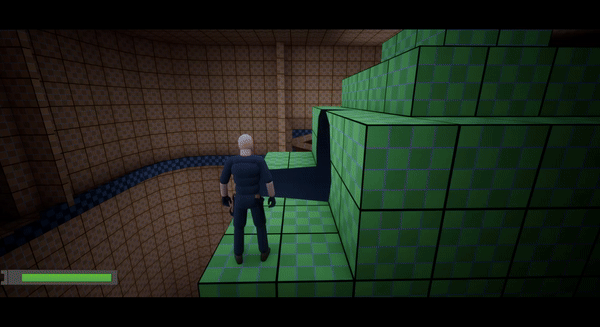
When the player finishes the level I created a level sequence that takes them back through the level to add a bit of extra oomph to the ending, as without it, this felt a little bit anti-climactic.
Checkpoints
During playtesting one key thing that was pointed out was my level had reached a length where checkpoints were needed to avoid frustration upon dying. So I ended up scripting my own bespoke checkpoint system to improve the flow and quality of the playing experience.
Design Techniques
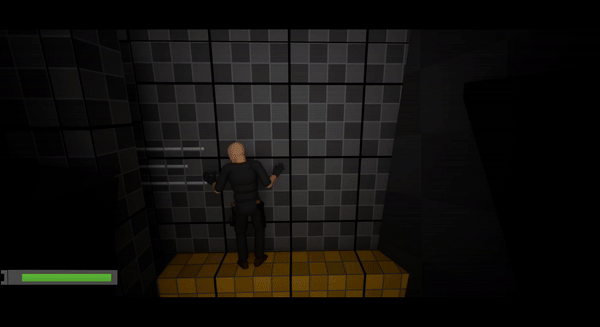
Here I make use of a funnelling technique. Making the player feel very cramped and tight only to reveal a wide open space to them. As well as this I have the player approach this area from a slightly more elevated position so they have space to survey the area and figure out their plan of attack.
I have also used leading lines and warm lighting in multiple places to guide the player where I want them to go.


Here I have shown the player gameplay and opportunities in a part of the room they cannot access yet. Showing them what challenges they will have to face before they face them.
Conclusion
This project was an exciting one for them as this is my first major level design that was completely self-directed. While it helped solidify my level design theory and fundamentals it also helped improve my time management, focus and organization, simply because I had to in order to make sure I finished this project.
As well as this it taught me a lot about crafting a longer experience that is fun while still serving a challenge, especially since I have not worked with the ALS system before. I am quite happy with the end product and it has made me overall more confident in my ability to design levels.
